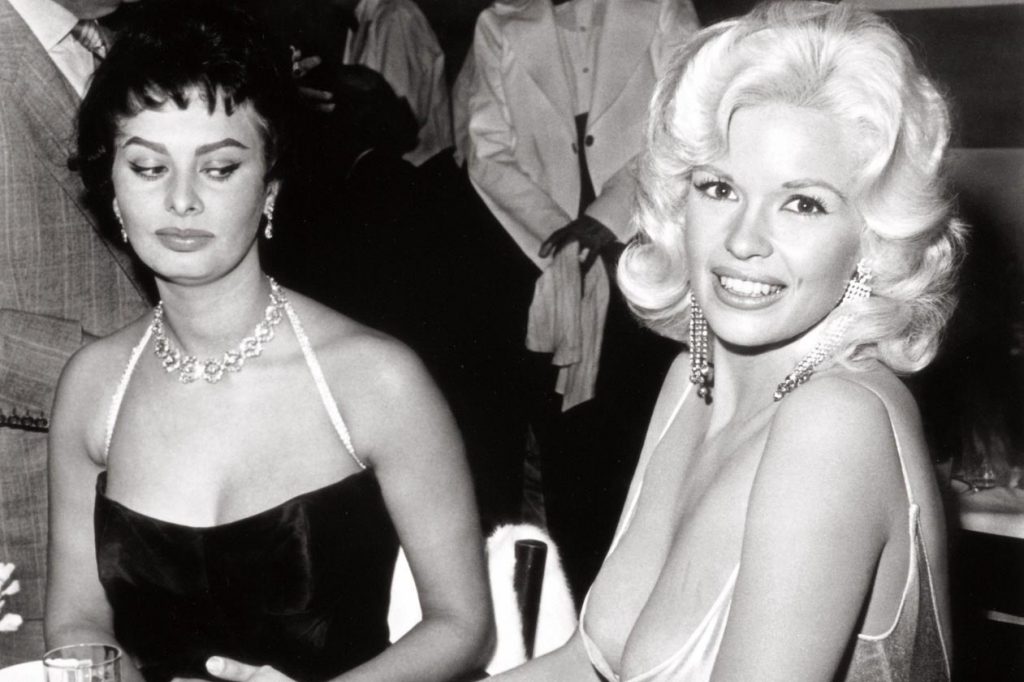Feminism
Why Feminists Must Understand Evolution
If our common goal is to encourage reciprocal respect for other individuals, in spite of average differences in group proclivities.

I am a feminist but I am not here to offer opinions, nor to enter into an intra-feminist debate. For all their various ideological differences, all feminists basically advocate the same things: for women and men to have the same rights and duties as citizens, and for women and men to enjoy the same freedom to decide what to do or not to do with their lives. I am here to present empirical evidence which ought to interest feminists, and which can help to explain human behaviour.
It is my goal to explain why the causes of male and female difference are not merely cultural or the product of patriarchal indoctrination. Separate athletic competitions and distinct medical disciplines of gynaecology and urology testify to the most obvious biological differences between men and women. But the scientific method − a co-operative, critical, and self-correcting process which has midwifed huge technological and medical advances − can also help us to understand more subtle differences between the sexes in interests and aspirations. And it is understanding what we really are that will make us free.
* * *
The study of other animals has produced significant advances in our understanding of human biology. We have been able to understand how our neurons function from the study of sea slugs and squid; we know how our embryos develop from the study of sea urchins, toads, and quails; we understand how the circulatory system works, and how to repair it when things go wrong, because we have studied the circulatory systems of pigs and dogs. Human physiology textbooks are full of data obtained by studying other animals, and the application of this knowledge has allowed us all to live longer and better lives. But the study of animal models also indicates that male and female differences are not only physical but also behavioural, and that they are a product of our common evolutionary history.
All human beings have something in common: we are offspring. We are the result of individuals being able to reproduce, who in turn were the progeny of other offspring who have managed to do the same. This chain is theoretically traceable along a lineage of individuals who reproduced successfully, all the way back to our origins. Those who did not reproduce did not leave a copy of themselves, and so no longer exist. (A more meticulous explanation of the functioning of evolution through natural selection and genetic drift, or what is known as synthetic theory, can be found on the UC Berkeley website.1)

Accordingly, each living being is potentially reproductively effective, because it is the offspring of reproductively effective parents. But sexual reproduction depends not only on the capacity to produce viable and fertile offspring, but also on finding a suitable reproductive mate. To qualify, this must be an individual of the opposite sex or, more precisely, someone who can provide gametes of the kind usually produced by the other sex. One of the sexes produces big, static gametes (eggs, which are relatively ‘expensive’ to produce) and the other produces small, rapidly moving gametes (sperm, which are somewhat ‘cheaper’). In many species, the sex with the ‘expensive’ gametes (the female) takes care of many other costly facets related to reproduction. For instance, a female turtle will cross an ocean to lay her eggs on the beach, and a female spider will regurgitate her own innards so that her offspring can feed, literally eating her to death. (Compared to examples like these, waking up at 3am to breastfeed the baby does not sound too exacting.)
Of course, the onus of expenditure does not fall on the female in all species, but whichever sex bears the greater cost of, and makes the greater investment in, child-bearing and -rearing will always be more selective when choosing a mate. After all, it is they who will bear the heavier consequences of a mistake (for example, failing to leave descendants or leaving only a few in return for their investment). So the underlying mechanisms guiding mate selection are subject to great pressures to be effective, and these inevitably bear on behavioural differences between the sexes. These pressures have produced powerful discriminatory abilities which make us selective, even petty, and lead us to subject all possible reproductive partners to constant evaluation. Historically, this arrangement has been an effective and successful reproductive strategy, given that the descendants are alive to make copies of themselves today.
The reproductive cost is undeniably greater for the human female, and the morphological differences between the sexes imply differences in what has been selected for in each sex to make us more effective breeders. But it is also important to understand how the physiological and anatomical differences between male and female reproductive strategies impact our behaviour.

Among feminists, there exists a pervasive tendency to believe that animals and humans play different roles in the world, and are subject to different rules. Some ascribe this difference to ‘culture’ or ‘intelligence,’ while others ascribe it to ‘society.’ However, this alleged distinction between humans and other animals does not stand up well under scrutiny.
Certainly, our cultural dimension affects the way we reproduce, but we cannot modify it much. This is because the mechanisms we have evolved to choose a mate and to reproduce are a product of our biology, passed down a long lineage of successful breeders. It is therefore reasonable to expect humans to be a typical species in this respect, just as we are in the examples offered earlier (neuron and heart function, embryonic development, and so on). Evolutionary biology predicts that each individual will try to pursue the best strategy to contribute genetically to future generations, and to produce offspring who will, in turn, produce offspring of their own.
But this strategy will be different for men and women, due to their distinct reproductive functions. The efficacy of the strategies pursued by our ancestors has determined something as simple and fundamental as the very fact that we exist at all. These strategies, then, are a fundamental part of us, even if social and cultural relations modulate them. It is only a slight exaggeration to say that from the moment we awake until the moment we go to bed, most of our actions have the ultimate purpose of leaving a progeny (or keeping that progeny alive, at least until it is old enough to produce descendants of its own).
This process manifests itself differently in males and females, and produces different behaviours. Women, by virtue of our greater reproductive investment, are generally very selective. Men, then, are only truly selective if they consider they will have to make a strong investment of time and resources in a relationship.2 As a consequence, men and women all over the world, across cultures, tend to look consistently for different things in the opposite sex (though, logically, they have common preferences as well). Furthermore, each sex emphasizes very different aspects of their own personality and physique in the attempt to attract a mate.3 4 5 6 7 This, in turn, makes competition among men very different to competition among women; the former is generally more obvious8 and the latter is more subtle (and more pernicious, in my opinion).9 10 11 12 13 14 15
These differences manifest as the differences we observe in our daily lives: from the toys we prefer when we are small to the products we consume when we are adults; from the tendency to be the object of bullying or its perpetrator to the likelihood of causing a traffic accident; from the posture we adopt when we sit in the underground to the importance we attach to career status.

These behaviours occur without us being too conscious of why we do what we do (other than the fact we feel like doing one thing or another). But we do not need to know that we are implementing a reproductive strategy in order to carry it out.16 17 We simply feel like behaving in a certain way, without interrogating the true cause of our predispositions. (For example, when we crave a hamburger, it is seldom with the conscious awareness that the consumption of many fats and carbohydrates in a few grams of food is an efficient strategy for obtaining energy.)
The fact that men and women are different in these respects does not preclude feminists from striving for completely equal rights between the sexes. However, it is important to understand how things really are if we are to try to modify them, and history provides us with examples of the hazards associated with pursuing an insufficiently tested theory. Convinced that the differences between male and female brains were social, a medical researcher and his team persuaded the parents of a baby boy who had lost his penis in a botched circumcision to raise him as a girl. 18 In spite of a course of hormone injections and the parents’ best efforts to deceive their child, in the end they had no choice but to concede defeat (with terrible consequences for all involved).
But some feminists would prefer to doubt the applicability of evolutionary biology to the human species. They believe that equality of behaviour in the sexes would exist in nature, but culture generates our inter-sexual differences (for examples see Chapter 1 in A Mind of Her Own).19 20 Apparently, contradicting this line of thought means that one is adopting a ‘biological determinist’ position, undesirable because it is provides a justification for systemic inequality and gendered violence. However, coming to this conclusion requires a significant degree of scientific and historical blindness.
Resistance to acknowledging biological differences in behaviour arises from a fear of the consequences of tying these differences to three clearly erroneous assumptions: 1), that what is natural is good, 2) that what is natural is correct, and 3), that what is biologically-based is impossible to modify.
If all natural things were good, then companies making orthodontic braces would have gone bankrupt long ago, we might die of an intestinal infection at the age of 19, and we would have as many children (or almost as many) as we have orgasms. The same naturalistic fallacy pertains to the justification of behaviours based on a natural tendency to carry them out. It might be natural to have sex with 13-year-olds who are already sexually mature, or to simply take what we find along our way as we see fit, or to use other species cruelly for our personal benefit. And yet, most of us do not do these things, nor do we excuse those who might. That a form of behaviour has its basis in biology does nothing to recommend it. Cultural norms are agreements about conduct and ethics, and they need not be justified with reference to what is and is not natural. Finally, with regard to whether all phenomena with a basis in biology are immutable, we can refute such a statement with reference to the improper and infrequent behaviours itemised above, or by observing that guide dogs refrain from marking their territory at every corner.

If our common goal is to encourage reciprocal respect for other individuals, in spite of average differences in group proclivities, then that goal cannot be well served by ignoring the basis for such differences. The imposition of respect may work in certain cases, but it does not seem to have made much impact on the number of deaths women face at the hands of men, which has remained remarkably stable year-on-year. We can more productively fight gender problems if we acknowledge naturally occurring differences upon which we can work, instead of imposing rules that only increase misunderstanding, allow fallacies to proliferate, and instrumentalise fear as a motor for change.
Some feminist authors insist that it is injurious to consider sex-based differences in the fight against gender inequality.21 But asking people to ignore the existence of biologically grounded sex-based differences only makes the disparities produced by those differences more difficult to understand and address. Other feminists argue that the very fact of being female authorises them to opine on the motivations of women with absolute certainty. But this is simply to generalise on the basis of one’s own particular example without the benefit of systematic evaluation.

It is better to generate our opinions and judgements based on observations that conform as closely as possible to objective reality, because our goals are political and we want them to affect each and every one of us. It is therefore imperative that we understand the nature of the reality we are trying to change, and the reasons why attempts to encourage complete parity of the sexes in all walks of life through social policy have not yet been successful and have, in some cases, led to the widening of disparities. Political action cannot be founded on opinions about how we would like the world to be (of which there is one for every person). It must instead be built on the foundation of our best understanding of natural reality as it is.
The good news is that information has never been more freely available. If we make the effort to learn a little English and master basic statistics, each one of us can draw her own conclusions based on the work others have already completed. What’s more, those who are not persuaded by this work can try to disprove it using the very same tools of investigation and analysis. Others may simply choose to discard measurement and reason, electing instead to behave much like those who reject the efficacy of vaccines, or insist that humans never went to the moon. But such behaviour does not allow us to build anything; it is only good for yelling into the wind and promoting norms which have nothing to do with reality, and which therefore can contribute nothing to the process of effecting meaningful change.
We may prefer to believe that the differences leading us to behave in sexist ways stem from culture, and not from a lack of it. But, by so doing, we will continue to try to impose norms not commonly shared, which will only aggravate the differences between us, making the society we co-inhabit increasingly hostile and founded upon ever more artificial human relations. Ideological ideas accepted a priori by many feminists, such as “language is sexist and changing it will reduce differences”, have not been properly evaluated as instruments for achieving equality. This matters because, in order to change the world, we must first study what we are, and why we behave as we do.
If the goal is not the pursuit of knowledge and understanding, but the promotion of dogma which insists that only socialisation generates sexism, I am afraid the glass ceiling will remain above women, the number of femicides will remain unchanged, and our efforts to improve society will be a perpetual source of disappointment and frustration. We must strive for a synthesis of the scientific knowledge of human behaviour and the political objectives of feminism. It is up to us to keep an open mind so we can better understand one another, the societies we have built, and the world we share. By these means alone, can we create the conditions necessary for real equality.
References:
[1] University of California B. Understanding Evolution; Available from: http://evolution.berkeley.edu/evolibrary/teach/guidetoevo101.php
[2] Buss D, Schmitt D. Sexual Strategies Theory: An Evolutionary Perspective on Human Mating. Psychological review. 1993; Available from: http://psycnet.apa.org/psycinfo/1993-29295-001
[3] Buss D. Sex Differences in Human Mate Preferences: Evolutionary Hypotheses Tested in 37 Cultures. Behavioral and Brain Sciences. 1989;Available from: http://journals.cambridge.org/abstract_ S0140525X00023992
[4] Schmitt D. Sociosexuality from Argentina to Zimbabwe: A 48-Nation Study of Sex, Culture, and Strategies of Human Mating. Behavioral and Brain Sciences. 2005; Available from: http://journals.cambridge. org/abstract_S0140525X05000051
[5] Shackelford T, Schmitt D, Buss D. Universal Dimensions of Human Mate Preferences. Personality and Individual Differences. 2005; Available from: http://www.sciencedirect.com/science/article/pii/ S0191886905000516
[6] Lippa R. Sex Differences in Sex Drive, Sociosexuality, and Height Across 53 Nations: Testing Evolutionary and Social Structural Theories. Archives of Sexual Behavior. 2009; Available from: http://link.springer.com/article/10.1007/s10508-007-9242-8
[7] Petersen J, Hyde J. A Meta-Analytic Review of Research on Gender Differences in Sexuality, 19932007. Psychological bulletin. 2010; Available from: http://psycnet.apa.org/journals/bul/136/1/21/.
[8] Archer J. Sex Differences in Aggression in Real-World Settings: a Meta-Analytic Review. Review of General Psychology. 2004; Available from: http://doi.apa.org/psycinfo/2004-21519-006.
[9] Fisher M. L. Female Intrasexual Competition Decreases Female Facial Attractiveness. Proceedings of the Royal Society of London B: Biological Sciences. 2004;271(Suppl 5):S283–S285. Available from: http://rspb.royalsocietypublishing.org/content/271/Suppl_5/S283
[10] Fisher M, Cox A. The Influence of Female Attractiveness on Competitor Derogation. Journal of Evolutionary Psychology. 2009 6;7(2):141–155. Available from: http://www.akademiai.com/doi/abs/10.1556/JEP. 7.2009.2.3
[11] Fisher M, Cox A. Four Strategies Used During Intrasexual Competition for Mates. Personal Relationships. 2011; Available from: http://onlinelibrary.wiley.com/doi/10.1111/j.1475-6811. 2010.01307.x/full
[12] Puts D. Beauty and the Beast: Mechanisms of Sexual Selection in Humans. Evolution and Human Behavior. 2010; Available from: http://www.sciencedirect.com/science/article/pii/ S1090513810000279
[13] Puts D, Barndt J, Welling L. Intrasexual Competition Among Women: Vocal Femininity Affects Perceptions of Attractiveness and Flirtatiousness. Personality and Individual Differences. 2011; Available from: http://www.sciencedirect.com/science/article/pii/ S019188691000454X
[14] Puts DA, Bailey DH, Reno PL, Puts DA, Bailey DH, Reno PL. Contest Competition in Men. 2015; Available from: https://books.google.es/books?hl=es&lr=&id=zt_RCgAAQBAJ& oi=fnd&pg=PA385&dq=Puts+2015+competition&ots=eDZhScr35y& sig=0WV7MWp3PLbRkHf5Zev08WqU34g
[15] Fisher ML. Women’s Competition for Mates: Experimental Findings Leading to Ethological Studies. Human Ethology Bulletin Proc of the XXII ISHE Conference. 2015; p. 53–70. Available from: http://ishe.org/wp-content/uploads/2015/04/HEB_2015_30_1_53-70.pdf
[16] Kóscinski K. Facial Attractiveness: General Patterns of Facial Preferences. Anthropological Review. 2007; Available from: http://www.degruyter.com/view/j/anre.2007.70.issue-1/ v10044-008-0001-9/v10044-008-0001-9.xml
[17] Little AC, Jones BC, DeBruine LM. Facial Attractiveness: Evolutionary Based Research. Philosophical transactions of the Royal Society of London Series B, Biological sciences. 2011 6;366(1571):1638–59. Available from: http://www.ncbi.nlm.nih.gov/pubmed/21536551http://www. pubmedcentral.nih.gov/articlerender.fcgi?artid=PMC3130383
[18] Diamond M, Sigmundson HK. Sex Reassignment at Birth: Long-Term Review and Clinical Implications. Archives of pediatrics & adolescent medicine. 1997 3;151(3):298–304. Available from: http://www.ncbi. nlm.nih.gov/pubmed/9080940
[19] Campbell A. A Mind of Her Own: The Evolutionary Psychology of Women. 2013; Available from: https://books.google.es/books?hl=es&lr= &id=VdgtAAAAQBAJ&oi=fnd&pg=PP2&dq=%25E2%2580%259Ca+mind+ of+her+own%25E2%2580%259D.+The+evolutionary+psychology+of+ woman%25E2%2580%259D+de+Anne+Campbell&ots=Zh3V8zClWf&sig= 477_wcVGz4FtH-rSdTmViRSIFiw
[20] Buss D, Schmitt D. Evolutionary Psychology and Feminism. Sex Roles. 2011; Available from: http://link.springer.com/article/10.1007/s11199-011-9987-3
[21] Petersen J, Hyde J. A Meta-Analytic Review of Research on Gender Differences in Sexuality, 19932007. Psychological bulletin. 2010; Available from: http://psycnet.apa.org/journals/bul/136/1/21/






